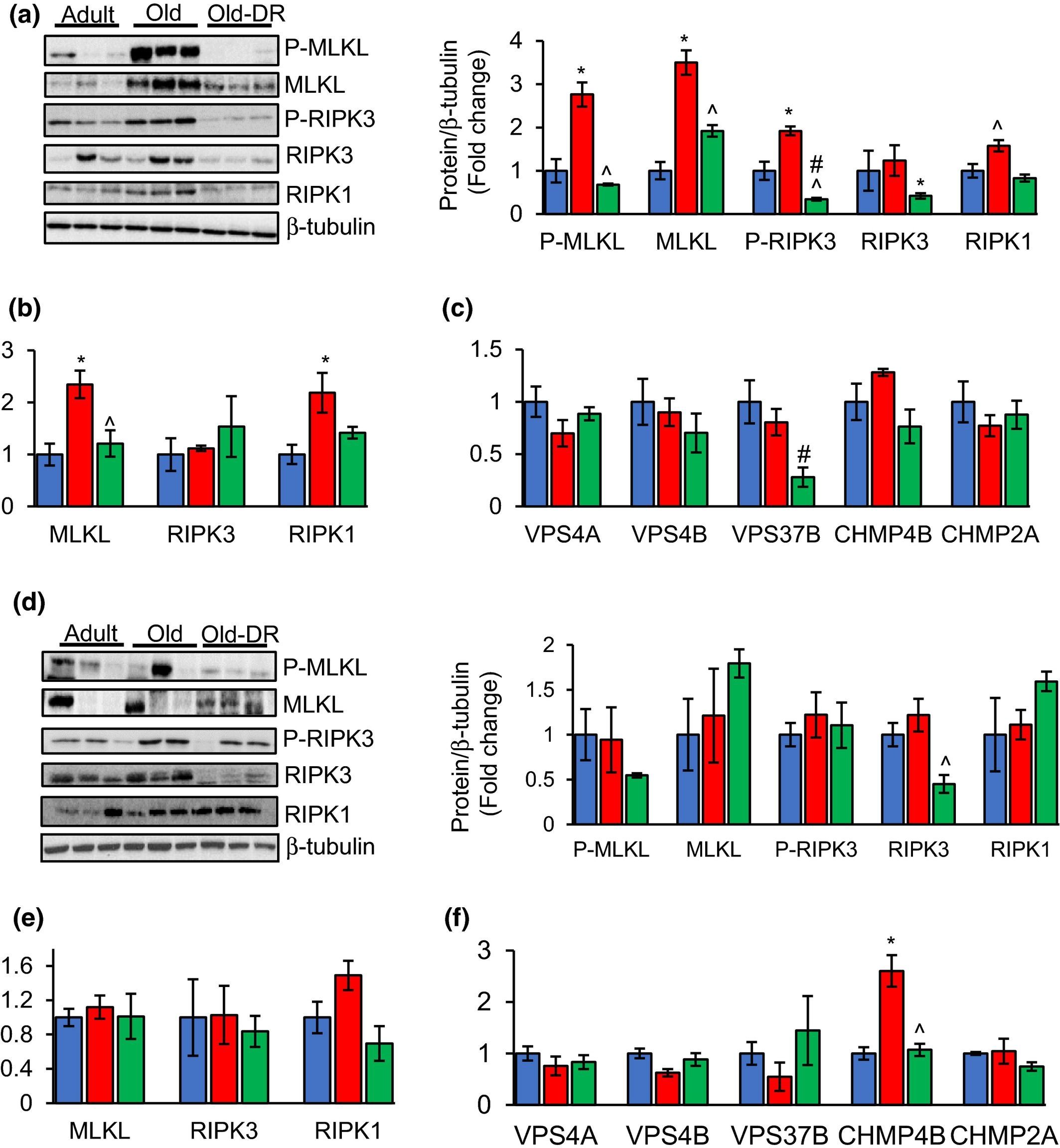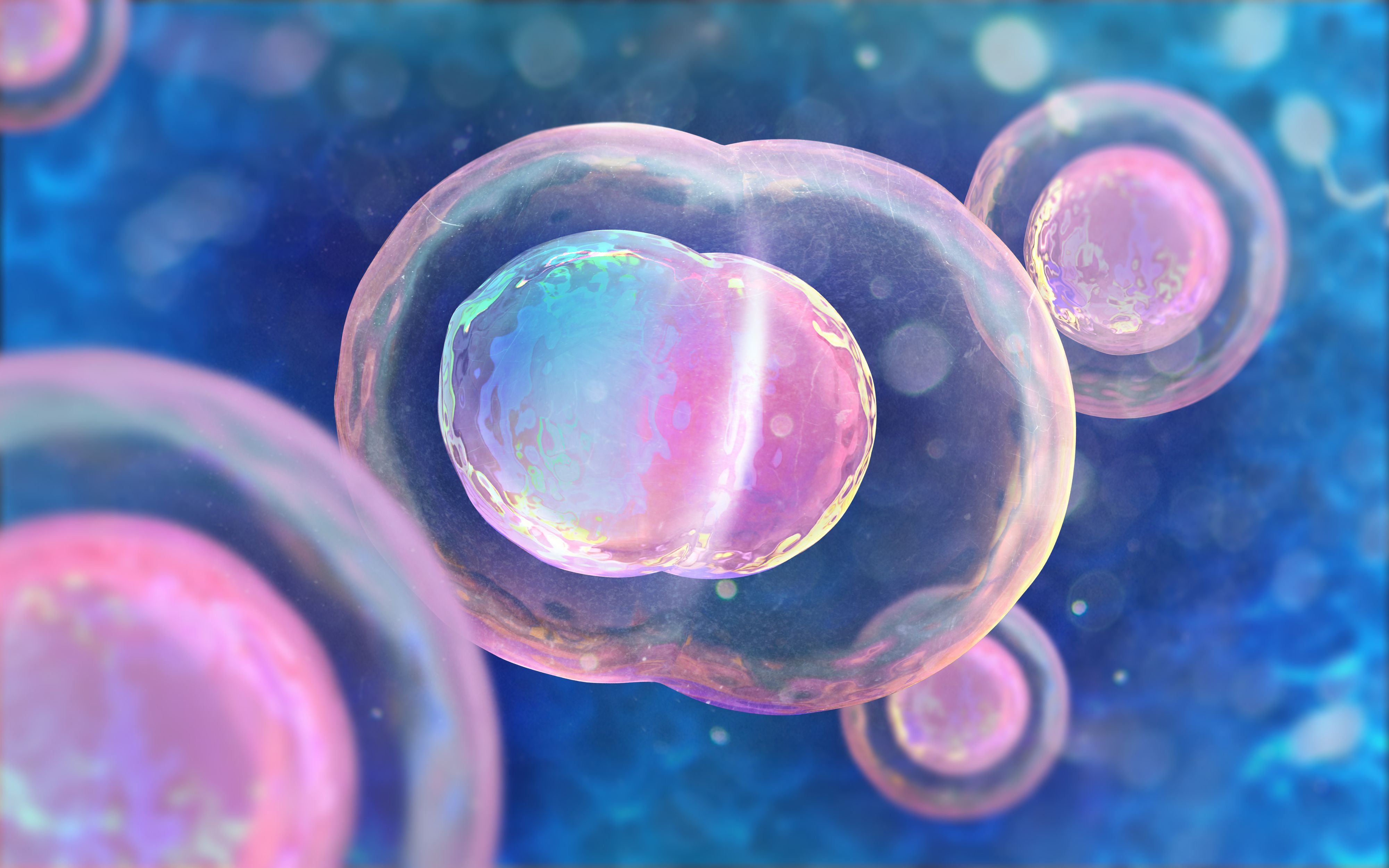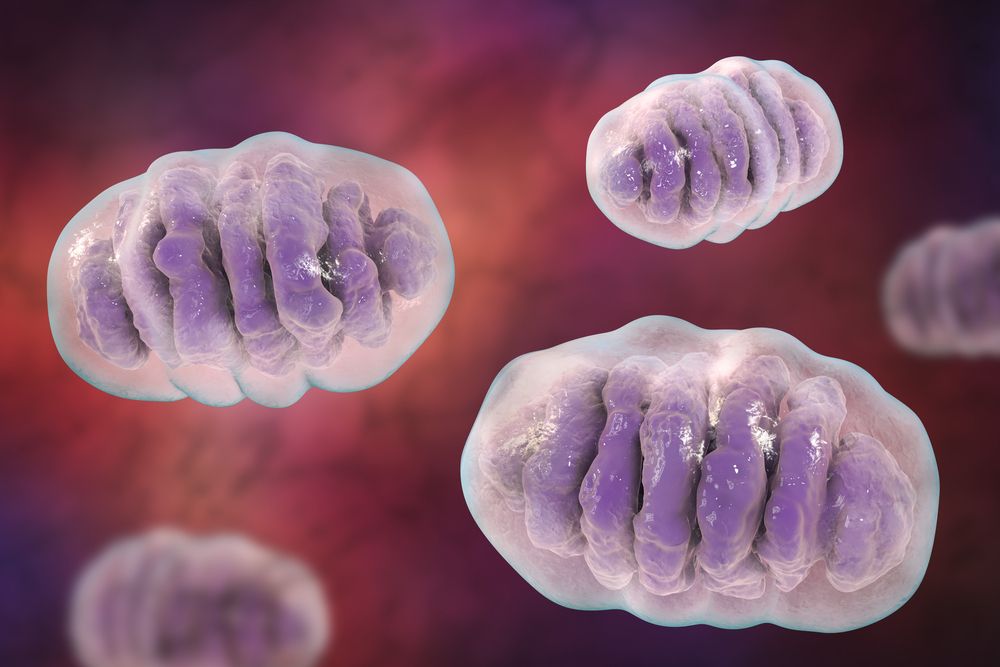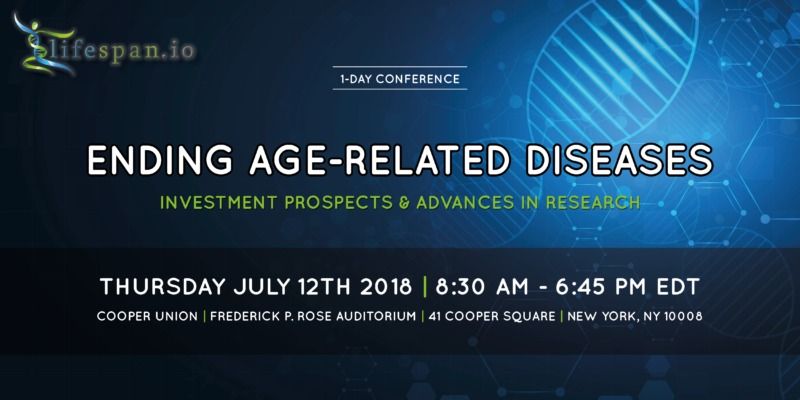http://toosickandnaked.com/2018/05/07/25-the-future-of-medic…-bioquark/



Aging is characterized by the progressive increase in chronic, low‐grade inflammation termed “inflammaging,” which is believed to play an important role in the mechanism underlying aging.
Necroptosis is a newly identified programmed cell death pathway that is highly proinflammatory due to the release of cellular components that promote inflammation. To determine whether necroptosis might play a role in inflammaging, we studied the effect of age and dietary restriction (DR) on necroptosis in the epididymal white adipose tissue (eWAT), a major source of proinflammatory cytokines. Phosphorylated MLKL and RIPK3, markers of necroptosis, were increased 2.7‐ and 1.9‐fold, respectively, in eWAT of old mice compared to adult mice, and DR reduced P‐MLKL and P‐RIPK3 to levels similar to adult mice. An increase in the expression of RIPK1 (1.6‐fold) and MLKL (2.7‐fold), not RIPK3, was also observed in eWAT of old mice, which was reduced by DR in old mice. The increase in necroptosis was paralleled by an increase in 14 inflammatory cytokines, including the pro‐inflammatory cytokines IL‐6 (3.9‐fold), TNF‐α (4.7‐fold), and IL‐1β (5.1‐fold)], and 11 chemokines in old mice. DR attenuated the expression of IL‐6, TNF‐α, and IL‐1β as well as 85% of the other cytokines/chemokines induced with age. In contrast, inguinal WAT (iWAT), which is less inflammatory, did not show any significant increase with age in the levels of P‐MLKL and MLKL or inflammatory cytokines/chemokines. Because the changes in biomarkers of necroptosis in eWAT with age and DR paralleled the changes in the expression of pro‐inflammatory cytokines, our data support the possibility that necroptosis might play a role in increased chronic inflammation observed with age.

A relatively easy way to boost intestinal stem cell (ISC) function might simply be fasting, according to a new study by a team of MIT biologists.
Stem cells supply the specialized cells that make up our tissues and organs; every time existing cells are lost for whatever reason, stem cells that can differentiate into that particular type of cell jump into action to compensate for the loss. However, this ability declines over time as aging progresses; indeed, stem cell exhaustion is one of the hallmarks of aging, and it affects our body by decreasing the regenerative capacity of its tissues, leading to immune dysfunction, muscle wasting, and even neurodegenerative diseases.
The lining of your intestine suffers from this problem as well. It consists of a fast-renewing tissue that typically renews itself entirely in a handful of days, and it is responsible for absorbing nutrients as well as keeping away unwanted substances; maintaining its regenerative abilities is therefore important for everyone, old or young; however, for older people, this is more challenging. However, a relatively easy way to boost intestinal stem cell (ISC) function might simply be fasting, according to a new study by a team of MIT biologists [1].
The study
The fact that caloric restriction yields health and longevity benefits in different kinds of organisms, possibly including humans, has already been known for a while. However, it is as of yet unclear what mechanisms cause this effect and to what extent people may benefit from it.


Today, we have an interview with Dr. Nichola Conlon, one of the speakers at the Undoing Aging 2018 Conference in Berlin, hosted by the Forever Healthy Foundation and SENS Research Foundation.
Introducing Nuchido
Dr. Conlon is the CEO of Nuchido, a new company that is set to launch later this year and was encouraged in part by four recent breakthroughs in biogerontology, which each showed rejuvenation in mammals [1–9]. These studies, which were all published in leading peer-reviewed scientific journals, showed that rejuvenation of aged animals was possible via different mechanisms of action.

A human study of the mitochondrial antioxidant MitoQ shows promise in addressing some aspects of vascular aging.
Antioxidant-based therapeutics to forestall the effects of aging have had a long history, ever since the elaboration of the free radical theory of aging by Denham Harmon in 1956. However, this long history has also had mixed results, with studies alternately showing efficacy, a lack of efficacy, or even negative health effects for some applications of antioxidants. Many of these studies analyzed the results of taking high doses of naturally occurring antioxidants. In general, high doses are necessary due to the poor bioavailability of many of these naturally occurring compounds.
The poor bioavailability of Coenzyme Q10, a naturally occurring antioxidant that is found in cells and decreases with age, spurred scientists to develop a synthetic form. This form, dubbed MitoQ, is very similar in structure to the naturally occurring form, only it has a triphenylphosphonium moiety that allows this derivative to be two to three orders of magnitude more permeable to membranes, particularly the membranes of mitochondria. It is within mitochondria that MitoQ appears to be doing most of its work by soaking up reactive molecules, generated as byproducts of respiration, that can oxidize and damage lipids and proteins.

We are delighted to announce our first US conference in NYC. An action-packed day of research and investment and the first of the events we have planned this year.
At the Frederick P. Rose Auditorium, Cooper Union in New York City, we will be hosting a special one-day conference focused on aging research and biotech investment. Developing therapies from initial concepts, through clinical testing, and ultimately to market takes a pipeline, and right now, that pipeline is being built to support the next step in medicine: rejuvenation biotechnology. Join us for this exciting event, where industry experts will be sharing their insights on the advances and investment prospects in an industry poised to revolutionize medicine forever.

Sometimes, people laugh imagining themselves as elderly people. Would they laugh imagining themselves as diseased?
If you watched a TV show, or read a comic book, where the difficulties and suffering of an oncological patient were portrayed in a disrespectful, humorous way, you would likely be outraged; at the very least, you would think that the show or comic book was in seriously bad taste. You’d probably think the same about similar material involving a disabled person or anyone who, because of an incurable disease, had only a short time to live spent in increasing misery—for example, a child affected by progeria, a disease that may best be described as a sort of accelerated aging syndrome that kills off its victims in their mid-twenties at the very latest.
Yet, it is not uncommon to see the diseases of old age, and even elderly people in general, being laughed at in just such a way without causing much outrage at all. Why is there a difference?
We’ve all seen this
You can probably recall plenty of examples of this phenomenon from your own experience. Who has never seen a sketch where the main characters are exasperated by a shriveled, elderly man who, holding up an old-fashioned ear trumpet, keeps getting wrong what they are saying despite all their efforts? How many times have cheap laughs been gotten because of an elderly person losing his or her dentures or a rambling old man exaggeratedly ranting about pretty much everything?

As April ends and, at least in the Northern Hemisphere, summer approaches, let’s have a look at the progress of worldwide efforts to extend the summer of life.
Kazan 2018: Interventions to Extend Healthspan and Lifespan
The highlight of April was unquestionably the Interventions to Extend Healthspan and Lifespan Conference, which was held in Kazan, Russia on April 23–26. Featuring over 40 distinguished speakers from the field of aging research, this conference, which was the fifth in the series, included talks on epigenetics, genomics, metabolomics, aging biomarkers, bioinformatics, effective advocacy, and more. LEAF board director Elena Milova attended the event and had the chance to interview several of the experts present, such as Dr. Andrei Gudkov and Professor David Gems. We will publish more interviews of these speakers in the coming weeks, so stay tuned!

Elena Milova was at the Interventions to extend healthspan and lifespan 2018 conference in Kazan this week. This is an important conference in the aging research field, and it includes a variety of leading experts giving talks about their research. During the event, Elena had the opportunity to talk with professor David Gems about his work and his views on aging.
Professor Gems is a British geneticist and biogerontologist. He is Professor of Biology of Ageing at University College London, where he is also Deputy Director of the Institute of Healthy Ageing. His work focuses on understanding aging through the genetics of the nematode worm C. elegans.